1806 All the world’s a harbour
Workboats for the World: The Robert Allan Story
by Robert G. Allan, with Peter A. Robson, and with a foreword by Peter G. Noble
Madeira Park: Harbour Publishing, 2022
$99.95 / 9781550179873
Reviewed by Phyllis Reeve
*
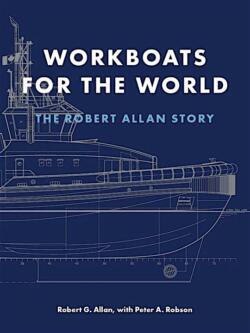 The ferry George Black has plied the waters of the Yukon River between Dawson City and Alaska since 1967. Her photo appears in two books which I have recently reviewed. The first was an art book. The second did not set out to be an art book, although it looks and feels like one. It is the documentation of one man’s dream which continued into later generations of his family, spread to like-minded people, and became part of the history of Canada’s West Coast, then eventually of the two other coasts of North America and beyond to wherever in the world work boats are needed.
The ferry George Black has plied the waters of the Yukon River between Dawson City and Alaska since 1967. Her photo appears in two books which I have recently reviewed. The first was an art book. The second did not set out to be an art book, although it looks and feels like one. It is the documentation of one man’s dream which continued into later generations of his family, spread to like-minded people, and became part of the history of Canada’s West Coast, then eventually of the two other coasts of North America and beyond to wherever in the world work boats are needed.
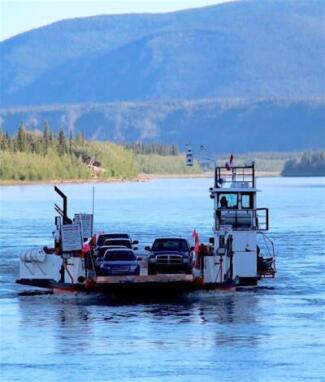
Robert G. Allan says on page one that the story of Robert Allan Ltd could easily be just about boats, but it isn’t. He begins with a brief family history. The first of the three Robert Allans was Scottish-born and trained, graduated in naval architecture from the University of Glasgow, and emigrated to Canada in 1919. While working for Wallace Shipyard (later Burrard Dry Dock) in North Vancouver, he designed the Princess Louise for CP Steamships. By 1927, he was ready to strike out, for the first year in partnership with George Stackhouse, and then on his own. 1928-9 was scarcely a propitious year to begin a new business, but his navigation through the Depression years reveals a prevailing characteristic of both man and company: the ability to adapt to prevailing winds and shift design focus as demands change. The now “heritage” vessels Fifer and Meander (much later refloated as Greenpeace IX) date from this time.
The second Robert Allan (Robert “Bob” F. Allan) joined his father in 1945; his first assignment — to prepare construction working drawings for an important post-war contract. The company became part of the international ship-design network, and by 1953 the younger Allan was ready to present a seminal paper to the FAO World Fishing Boat Congress: “Design and construction of British Columbia Fishing Vessels”. The Allans were beginning to share and publish original work in their discipline.
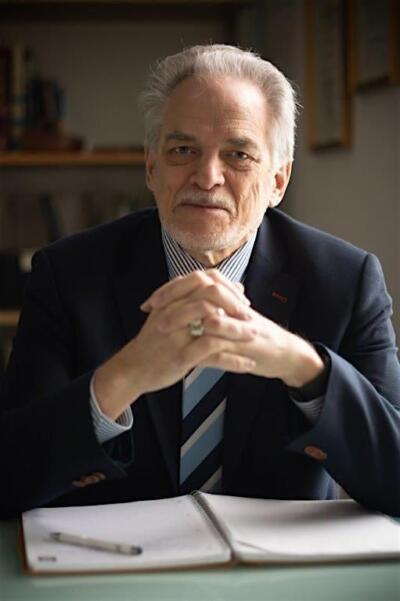
By the early 1960s Robert Allan had “eased into retirement” and Bob Allan was firmly in charge. The company was formally incorporated in 1962, and kept growing. In 1966 the staff of eight engineers and naval architects moved from the Allan home office, accessed through the back garden gate and down the basement steps, into more seemly “official” business premises.
The third Robert Allan (Robert “Rob” G. Allan) joined his father in 1973. The transition was to be gradual, like that between the previous generations, but cancer struck both Bob Allan and his wife within a few short years of each other, and suddenly Rob, still in his early 30s, was in charge of everything, including one of the largest design projects in the company’s history. He writes movingly but briefly about the stresses of that time, and gets on with the story, which by then included many people beyond the family — designers, clients at home and abroad, suppliers, shipbuilders, etc. There were hard times, but somehow someone somewhere needed a boat to get them through a crisis; and the people at RAL turned a corner, learned new mindsets and designed new workboats for new needs.
The first readers of the book will be naval architects or marine engineers. This review is not for them, although they may be interested in what someone else takes away from the story. So I will not attempt to comment on, for instance, computational fluid dynamics or Z-drives, except perhaps to imply that the first is useful in problem solving and that the second is definitely a Good Thing and to point out that the stories around these strange and wonderful things are interesting even if the reader is not sure what the “Kort nozzle” is or does, even after the author has done his patient best to explain.
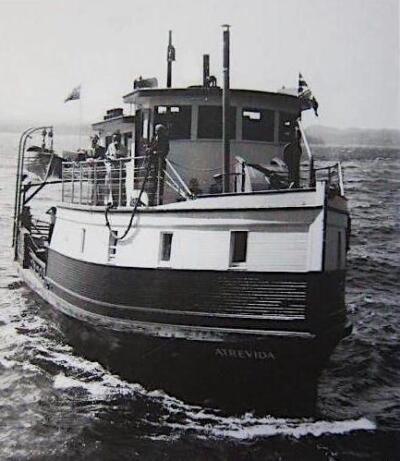
Instead, I address readers interested in beautiful books, the history and future of the Canadian west coast, and in something more global which I think of as Tugboat Diplomacy.
Readers with affinity to the west coast will recognise boats which have floated through their lives, boats designed by this one west coast company. Gulf Islanders such as myself will note the ferry Atrevida on which Malcolm Lowry and many other people travelled from Nanaimo to Gabriola Island (with detailed drawings of the ferry’s internal arrangement), the halibut troller Saturnina and the drum seiner Pacific Mist built on the shore of Silva Bay by Withey & Sear, and a watercolour painted by Allan’s “friend and relative” Doug Harrison of Gabriola depicting three seiners two of them Allan designs. Other coast dwellers will recognise various ships bearing the names of Charles H Cates or Seaspan, as well as Vancouver Ferry no. 5 especially in its retirement incarnation (until 2001) as the Seven Seas Seafood Restaurant on Vancouver’s north shore, or the Delta Princess built for the south arm of Fraser River and superseded by the Deas Island (later the George Massey) Tunnel. To name only a few of the most obvious.
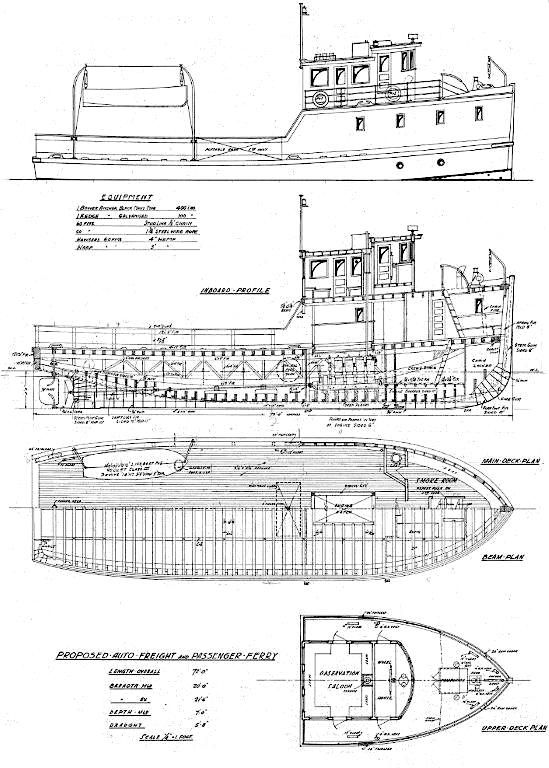
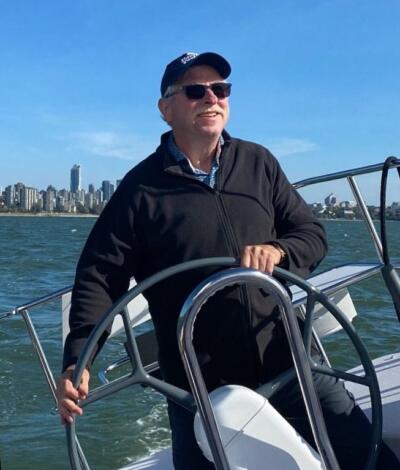
Rob Allan and his co-author (Peter A. Robson, well-known writer and editor of BC nautical books and magazines, and enthusiastic sailor) have delved into company archives, research papers, newspapers and journals both popular and professional, solicited memories and anecdotes, and amazed themselves with the riches of the design legacy they uncovered. They note, as pointed out by Peter G. Noble in his foreword, the advantage the company gave itself by its early adoption of computer tools and modern communications.
The book is a celebration of boats in all their variety and splendour. Various types of vessel designs have their separate chapters, with detailed descriptions and narratives and gorgeous illustrations — photographs of course, but also design drawings which are things of unexpected beauty.
Fishing vessels predominated during the Second World War, the years of the BC seiner fleet 1942-44. As orders for canned salmon were coming in from Britain, fishing companies had planned on the use of seiners and packers confiscated from Japanese Canadians. But the government claimed most of these for naval service, and initiated a subsidized seiner building project to meet the fishing needs. Allan does not explain how the Nikkei boats came to be available: another and all-too-familiar story. But 200 pages and 30 years later, he is designing icebreakers to be built by Nippon Kokan of Japan for Gulf Canada. Interestingly, the model-testing took place in Hamburg, Germany. Ice-breaker diplomacy.
As the business grew, RAL designed coastal patrol vessels such as the RCMP’s Nadon, later used to recreate the voyage of the legendary St Roch, and the storied coastal mission vessels, the Columbia and the John Antle II.
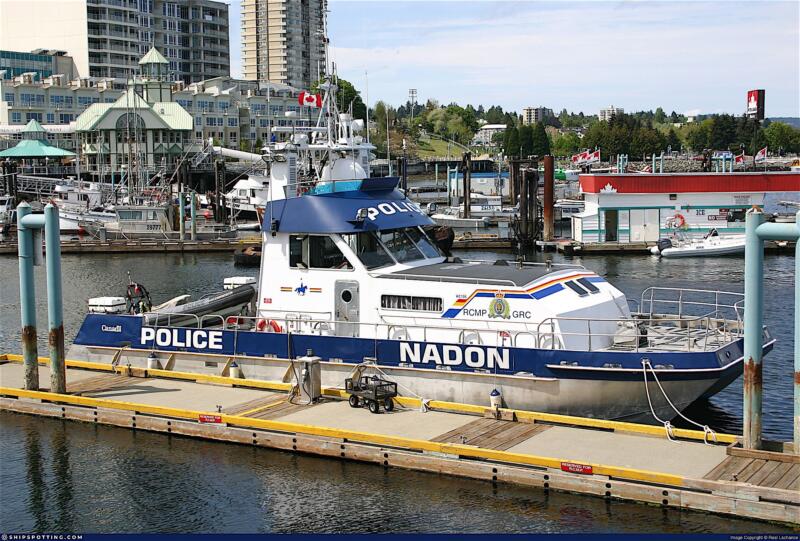
And ferries. Allan begins his “ferry story” in 1931 with the Atrevida, and continuing to the Vancouver shore, the Kootenays, Prince George, Prince Rupert, the Peace and the Mackenzie Rivers, Labrador, the Bay of Fundy, Hudson Bay, Singapore – and the Canadian prairies. It turns out that Manitoba required “an entire fleet of ferries to serve a range of routes around that province of a million lakes and rivers, the majority of which served remote Indigenous communities.”
“Workboats for every whim” include survey boats, repair boats, navigation aids and a “multi-purpose workboat for Turkey”.
Research vessels are designed for the Arctic, for Australia, for Singapore, for Gaspe and the Maritimes, Canada’s Department of Fisheries and Oceans, and for the Pacific Biological Station at Nanaimo. There are inshore and offshore fisheries science vessels, and there are “paper ships”, the designs never built.
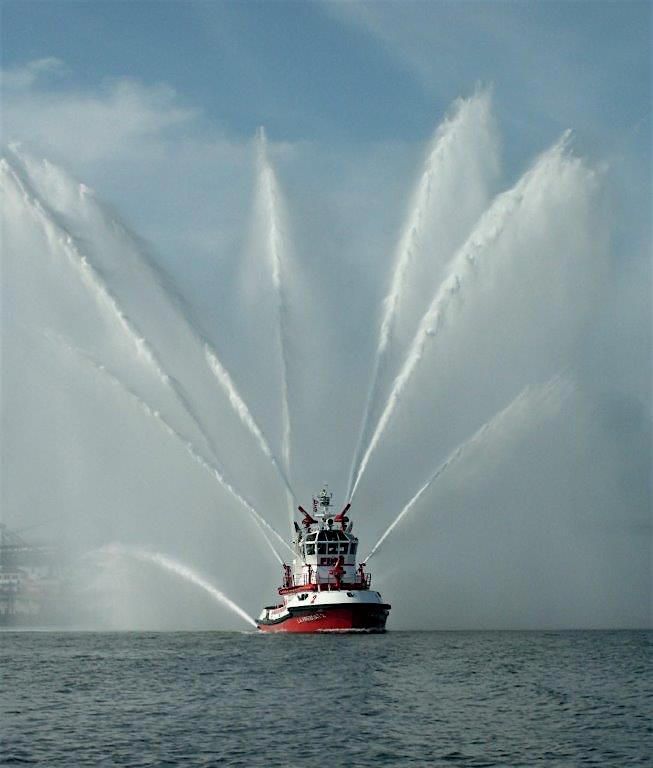
Fireboats excel in excitement for anyone observing them in action. Designers respond to the challenges and restrictions imposed by geography and politics while aware of lives depending on their responses and solutions, probing the intricacies of the fire pumps, and thrilling to the beauty of the water jets. The events of 9/11 underscored the need for flexibility, dexterity and range. The United States was not alone in rebuilding its fireboat fleet; RAL found themselves designing also for China, Hong Kong, Kuwait and Bangladesh. Other emergency response vessels are purpose-designed for search and rescue, cleanup of pollutions and oil spill, and general trouble-shooting.
The chapter “Offshore Industry Vessels” addresses the dominance of international offshore oil in the maritime industry since the 1960s when RAL was still too small a company to compete with the North Sea giants. Even then they were ideally suited to design craft for supply and support vessels and crew boats, addressing such specific operational needs as ice-breaking emergency evacuation vessels for oil-platform workers in the Caspian Sea and a waterjet-powered dive support vessel for Brazil. A whole class of support vessels became associated with the RAL brand.
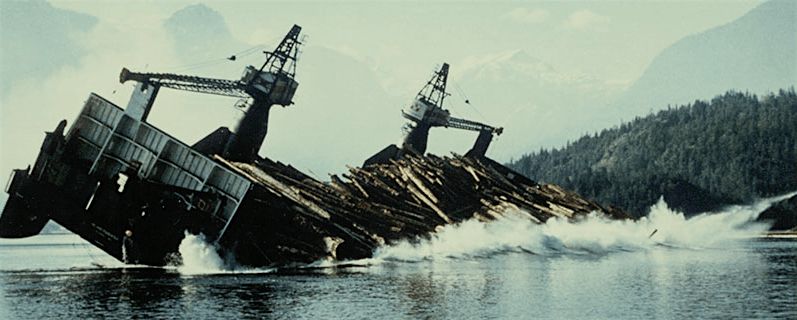
Waiting at the Nanaimo ferry dock for the ferry to Gabriola, I realise my attitude to barges has changed. Those big ungainly floating objects are less clumsy than they seem. We know they are “vital to the coastal economy”, and we are aware of chip barges, log barges, railcar barges, barges for cement or paper, and deck barges to serve quarries, but we may need to be reassured about the brainwork involved in their construction, of the thought given to resistance, directional stability, something called stern-rake geometry, the design’s relation to fuel consumption and the specifications for carrying hazardous materials. Their longevity is a byword; many of the barges afloat were built in the 1960s; design and maintenance is all.
Meanwhile, away from the coast, Robert Allan boats are “Working the Rivers” — the Fraser, of course, and the Mackenzie, dealing with shallow sandbanks where a tug may draw as little as 30 inches. For the far north, they created many craft “simple and unglamorous, but highly effective, designed to meet the challenges of working in this very remote area, devoid of support services.” After the collapse of Arctic oil exploration, the vessels found other uses.
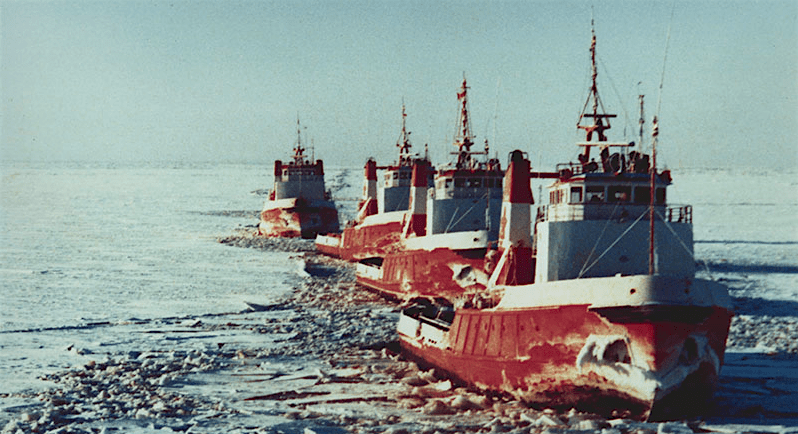
And who knew there were remote-operated unmanned barges pre-dating radio remotes and using direct electrical connections?
Other river projects included a border train shuttle between Windsor and Detroit, and designs for Guatemala, Brazil, Argentina, from the Fraser & Mackenzie to the Rio Plata and the Amazon. Here, Allan talks about establishing “significant and trusted working relationships” with clients world-wide.
Which brings us to Tugboats: six chapters and 100 pages of tugboats, and the art of Tugnology. Yes, “Tugnology” is a word, coined in 2007 for the series of events and conferences which reaffirmed the place of Robert Allan Ltd within the international industrial network. Allan traces the story of how the “humble but increasingly sophisticated” tug came to define the range and achievements of the company.
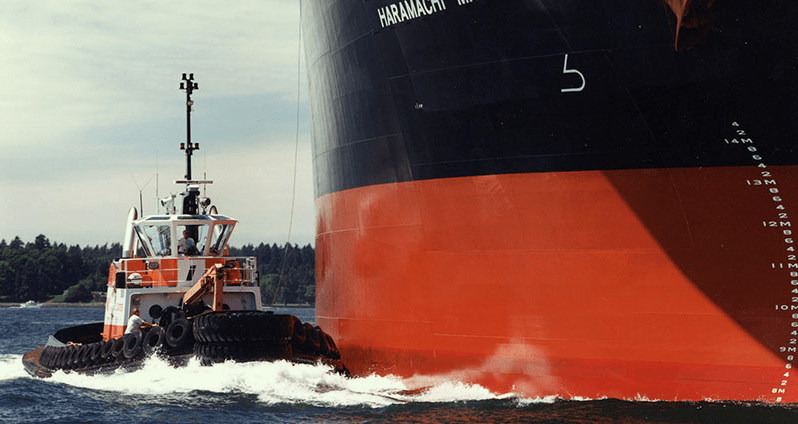
The essence of Tugnology is more than “tugging”; it is problem solving. The task of a tugboat is to handle much larger ships and maneuver them around obstacles into the waiting space, the challenge being that each port has unique geographic and environmental characteristics. The word “challenge” appears and reappears frequently. Someone has a problem, which RAL grabs and solves and then applies and adapts to further challenges. So questions posed by Cates became the template of an entire generation of simple, highly efficient and cost-effective tugs, and both companies in their separate roles were predominate in the development and work of a BC Coastal Tugboat Fleet in the 1960s and 1970s. When decades later Cates needed tugs specifically intended to handle and berth ships, Allan’s designers guided the evolution of a worldwide genre of ship-handling harbour tugs. Then when conditions in the St. Lawrence required tugs, to fulfill the conflicting requirements of heavy ice-breakers and performing tanker escort” they made that happen too, and solved a similar problem for ports in Russia.
When in 1970 they designed and oversaw the building of the first tug to meet new safety-inspired regulations, everyone on the team from designer to carpenter were inspired by the achievement. Twenty years later they designed tanker escort tugs to meet the standards of Exxon Valdez-inspired Oil Pollutions Act of 1990.
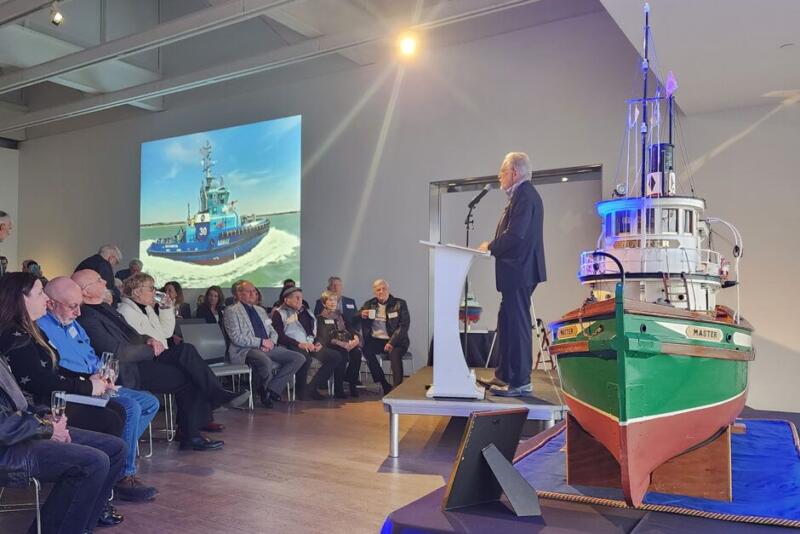
Allan writes with pride of his team’s innovations: a series which revolutionised tug propulsion design; improved wheelhouse visibility and sightline for the master when working under the flare of a ship’s bow; noise & vibration control, a problem solved by examining the operation of a guitar amplifier; large high-performance escort tugs, hybrid tugs and oh yes — submarines for West Edmonton Mall. An all-electric tug is in progress. So is an “Autonomous Recording Vessel.”
“Warships are not in our area of interest,” Allan asserts more than once. They will, however, design auxiliary vessels such as fireboats and tugs for the American Navy, and, for the Canadian Forces, vessels intended to recover expended torpedoes in the area of the maritime test facility located on the east side of Vancouver Island, at Nanoose Bay.
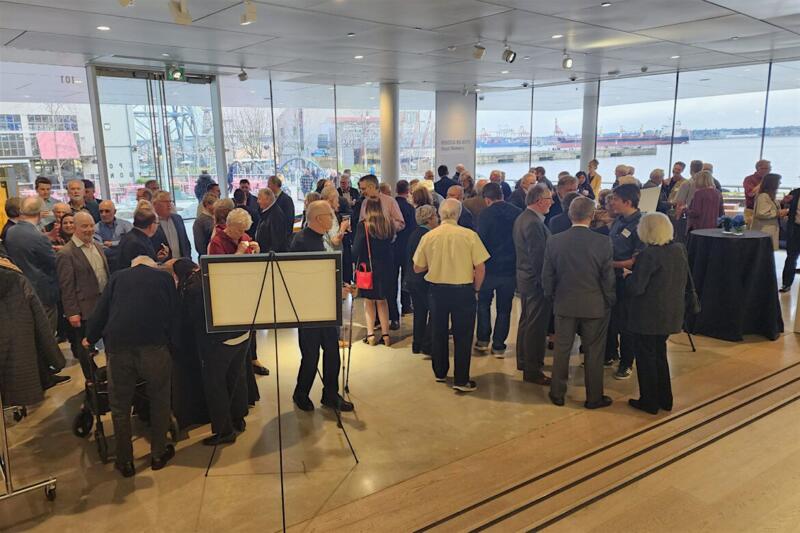
Things don’t always go well, Rob Allan can be politely outspoken: about “some shortcomings in the government’s vessel procurement processes;” the “true Canadian fashion” of political favours; irrational rules and limitations, and economic policies that made it necessary for Vancouver”s Coal Harbour fuel station to be built in Alaska; the complications of NAFTA; shipyards “taking liberties” with the designs; the litigation traps of American public projects where the designer or engineer is given the role of sacrificial lamb. And we remember the ill-fated PacifiCats, the Fast Ferry for the Nanaimo-Horseshoe Bay run: doomed as soon as ferry workers’ unions heard the craft would require fewer crew than larger ships and “numerous so-called experts made their unsubstantiated opinions public” — ironic in light of today’s problems in achieving required crew levels. The justified complaints about the shore impact of the vessel’s wake never had a chance to be addressed.
A West Coast dig at Central Canada observes that the Great Lakes area is a “tough market” because of the “easterner’s typical perception”. Exceptions include a commission from Ports Toronto for a small tug, christened by elementary school students, the Iron Guppy.
And a stark reminder that good intentions and sound advice are useless without action. In 1990 Robert Allan Ltd was commissioned by Transport Canada to conduct “a detailed study into the present state of the marine towing industry in Canada. Published at the end of 1991, the study looked critically at the power/size relationship of tugs and barges, which “has been an issue in the industry for decades and can be shown to occasionally have deadly consequences.” The example cited is “the sinking early in 2021 of the small tug Ingenika in northern BC, with the loss of two lives.” The chapter concludes, ominously, “Transport Canada has never acted on the recommendations in the 1990 study.” In March 2023 the Canadian Transport Safety Board issued a report on the Igenika sinking, criticising Transport Canada’s lax oversight of the industry and offering recommendations to prevent such incidents in the future. We can only hope another 30 years will not pass before Transport Canada listens and acts.

It may be ironic that world-class tugs for BC are designed in Canada, but have to be built elsewhere, often these days in Turkey, and transported back to be used on the BC Coast. On the other hand, the global perspective proves one of the most striking aspects of the RAL story. What Allan calls “the Turkish connection” began with individuals meeting at a conference in 1993. By 2022 the Turkish shipbuilder Sanmar had become Allan’s leading client. These Tugboat Diplomats have fun along the way. The 200th tug in their collaboration, a 24-metre hybrid design, is painted with Warhol-inspired flowers on its bright green hull to reflect their trend toward reduced environmental impact.
What next? What to do with the heritage? Rob Allan’s sons, none of them named Robert, have their own lives and careers, not designing boats. But there are people — not named Robert Allan — who have invested years and talents in the company. The account of the transition from family to employee ownership is exemplary, and helpfully described.
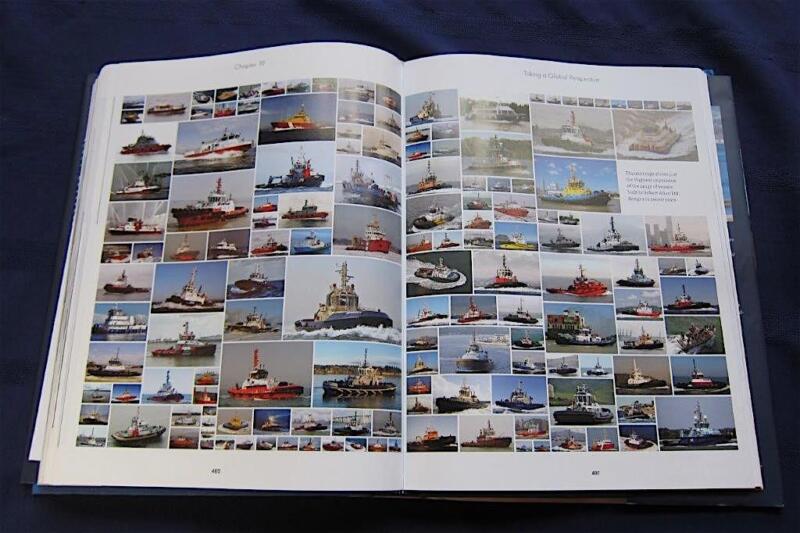
And the book itself? Despite its size — 9″ x 12″, 612 pages — it is sewn to lie flat and take advantage of the illustrations. The jacket’s front cover is impressively elegant, a detail from a drawing rather than a Technicolor splash.
In 2022 Robert Allan Ltd delivered vessels to 35 yards in 19 countries on every continent except Australia and Antarctica. A message to colleagues announcing the book’s official launch on April 5th proclaims the event as “an evening of camaraderie and celebration” as well as “an opportune time to discuss some of the broader issues facing BC’s maritime heritage today.”
Meanwhile waiting at the Gabriola ferry dock in the Nanaimo Harbour I watch three ferries, a pair of tugs manoeuvring a container-ship, another guiding a barge, and a couple of new Emergency Response Vessels ready for action. And I think about Tugboat Diplomacy.
*

Phyllis Parham Reeve writes about local and personal history in her three solo books and in contributions to journals and multi-author publications. She is a contributing editor of the Dorchester Review and her writing appears occasionally in Amphora, the journal of the Alcuin Society. She co-founded the bookstore at Page’s Resort & Marina on Gabriola Island. More details than necessary may be found on her website. Editor’s note: Phyllis Reeve has recently reviewed books by Mother Tongue Publishing, Lara Campbell, Michael Dawson, & Catherine Gidney, Donald Lawrence, Josephine Mills, & Emily Dundas Oke, Iain Lawrence, Lisa Anne Smith, and Mowafa Said Househ for The British Columbia Review.
*
The British Columbia Review
Interim Editors, 2023-24: Trevor Marc Hughes (non-fiction), Brett Grubisic (fiction)
Publisher: Richard Mackie
Formerly The Ormsby Review, The British Columbia Review is an on-line book review and journal service for BC writers and readers. The Advisory Board consists of Jean Barman, Wade Davis, Robin Fisher, Barry Gough, Hugh Johnston, Kathy Mezei, Patricia Roy, Maria Tippett, and Graeme Wynn. Provincial Government Patron (since September 2018): Creative BC. Honorary Patron: Yosef Wosk. Scholarly Patron: SFU Graduate Liberal Studies.
“Only connect.” – E.M. Forster
7 comments on “1806 All the world’s a harbour”
Such a comprehensive review: the book looks amazing!